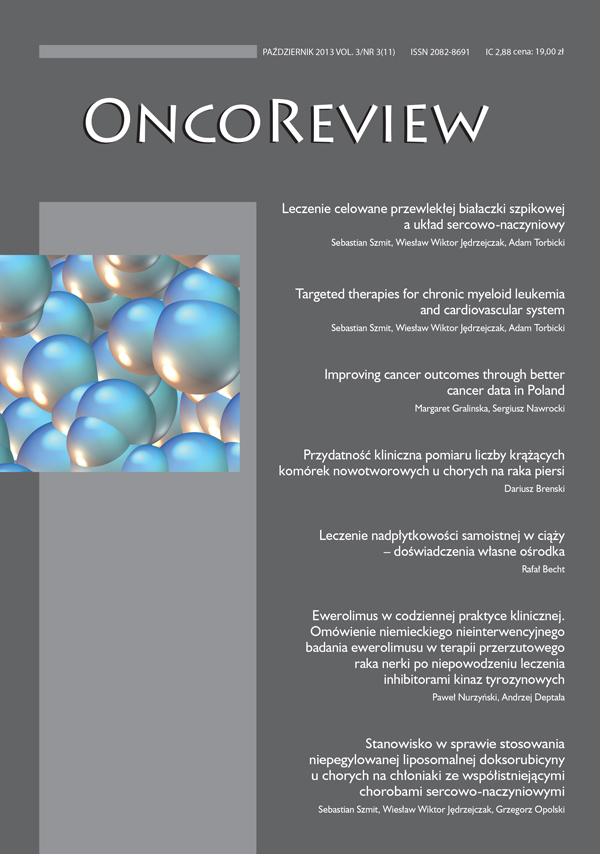The management and outcome of essential thrombocythemia in pregnancy – single-center experience Original article
Main Article Content
Abstract
Essential thrombocythemia (ET) is a myeloproliferative neoplasm characterized by an increase in platelet (PLT > 450 000/μl) and a tendency for either thrombosis or hemorrhage. ET is often diagnosed in elderly life and is two times more frequent in females than in males. This is the most common myeloproliferative neoplasm in women of childbearing age. An increased risk of fetal and maternal complications has been demonstrated in patients with ET. Most of complications (particularly the case of spontaneous abortion) occurs during the first trimester of pregnancy. The paper presents four pregnancies in three patients with essential thrombocythemia who were treated in Department of Hematology Pomeranian Medical University. In the treatment of pregnant patients with essential thrombocythemia interferon alpha, acetylsalicylic acid (ASA) and low molecular weight heparin were used.
Downloads
Metrics
Article Details

This work is licensed under a Creative Commons Attribution-NonCommercial 4.0 International License.
Copyright: © Medical Education sp. z o.o. This is an Open Access article distributed under the terms of the Attribution-NonCommercial 4.0 International (CC BY-NC 4.0). License (https://creativecommons.org/licenses/by-nc/4.0/), allowing third parties to copy and redistribute the material in any medium or format and to remix, transform, and build upon the material, provided the original work is properly cited and states its license.
Address reprint requests to: Medical Education, Marcin Kuźma (marcin.kuzma@mededu.pl)
References
2. Meliiio L., Tieghi A., Candoni A. et al.: Outcome of 122 pregnancies in essential throbocythemia patients: A report from the Italian registry. Am. J. Hematol. 2009; 84: 636-640.
3. Valera M.C., Parant O., Vayssiere Ch. et al.: Essential thrombocythemia and pregnancy. European Journal of Obstetrics & Gynecology and Reproductive Biology 2011; 258: 141-147.
4. Elliott M.A., Tefferi A.: Thrombocythaemia and pregnancy. Best Practice & Research Clinical Haematology 2003; 16(4): 227-242.
5. Wright C.A., Tefferi A.: A single institutional experience with 43 pregnancies in essential thrombocythemia. Eur. J. Haematol. 2001; 66: 152-159.
6. Gangat N., Wolanskyj A.P., Schwager S., Tefferi A.: Predictors of pregnancy outcome in essential thrombocythemia: a single institution study of 63 pregnancies. Eur. J. Haematol. 2009; 82: 350-353.
7. Marson B., Harrison C.: Controversies in the Management of Essential Thrombocythemia. Clinical Leukemia 2007; 1(3): 155-161.
8. Cook C.L., Pridham D.D.: Reccurrent pregnancy loss. Curr. Opin. Obstet. Gynecol. 1995; 7: 357-366.
9. Griesshammer M., Struve S., Barbui T.: Management of Philadelphia negative chronic myeloproliferative disorders in pregnancy. Blood Rev. 2008; 22(5): 235-245.
10. Griesshammer M., Mergmann L., Pearson T.: Fertility, pregnancy and the management of myeloproliferative disorders. Baillieres Clin. Haematol. 1998; 11(4): 859-874.
11. Passamonti F., Randi M.L., Rumi E. et al.: Increased risk of pregnancy complications in patients with essential thrombocythemia carrying the JAK2 ( 617V>F) mutation. Blood 2007; 110: 485-489.

